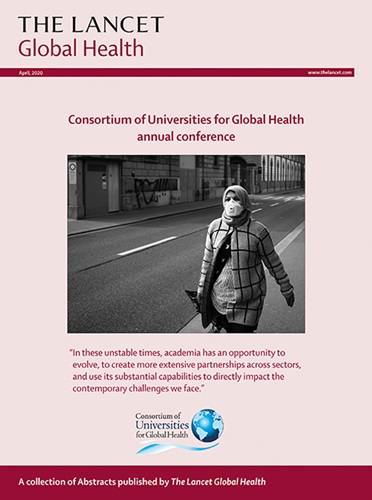世界各地精神健康状况流行率方面的数据缺口:对具有国家代表性数据的回顾性分析。
IF 19.9
1区 医学
Q1 PUBLIC, ENVIRONMENTAL & OCCUPATIONAL HEALTH
引用次数: 0
摘要
心理健康状况在很大程度上造成了全球疾病负担,影响生活质量,导致保健费用和死亡率增加。关于这些疾病的流行和相关因素的准确数据对于决策、宣传和改善人口健康至关重要,但关于世界各地精神卫生困难程度的现有数据存在明显差距。本研究旨在确定和量化2021年全球疾病、伤害和风险因素负担研究(GBD)中关于精神障碍的数据缺口。方法:我们分析了GBD 2021使用的11种精神健康状况的全国代表性数据源,包括神经发育障碍和神经分化、一般精神障碍和物质使用障碍。我们的分析侧重于数据源的地理来源,所涵盖的年龄组和心理健康状况或神经分化,以及数据科学生产的时间趋势。sgbd 2021确定了自1950年以来1241个独特的全国代表性精神健康状况数据来源。神经发育障碍和神经分化的覆盖率最低,只有不到13%的国家有患病率数据。低收入国家的数据缺口最大,没有关于神经发育障碍和神经分化的数据,只有29%的国家有关于一般精神障碍的数据,21%的国家有关于药物使用障碍的数据。非洲和西太平洋区域的数据缺口最大,儿童是覆盖最少的人口:几乎90%的国家没有任何儿童数据。大多数数据(70-80%的疾病)是在2010年之前获得的。在全球范围内,特别是在儿童和低收入国家,患病率数据仍然存在巨大差距。尽管2000年代的科学成果有所增加,但大多数精神疾病的代表性仍然不足。需要在全球范围内作出协调一致的努力,以加强精神卫生数据收集并解决这些差距。资金协调:巴西本文章由计算机程序翻译,如有差异,请以英文原文为准。
Data gaps in prevalence rates of mental health conditions around the world: a retrospective analysis of nationally representative data.
BACKGROUND
Mental health conditions contribute substantially to the global burden of disease, affecting quality of life and leading to increased health-care expenses and mortality. Accurate data on the prevalence and correlates of these disorders are crucial for policy making, advocacy, and improving population health, but there are notable gaps in the available data on the magnitude of mental health difficulties around the world. This study aims to identify and quantify the data gaps on mental disorders across the lifespan in the Global Burden of Diseases, Injuries, and Risk Factors Study (GBD) 2021.
METHODS
We analysed the nationally representative data sources used by GBD 2021 on 11 mental health conditions, including neurodevelopmental disorders and neurodivergence, general psychiatric disorders, and substance-use disorders. Our analysis focused on the geographical origin of the data sources, the age groups and mental health conditions or neurodivergence covered, and temporal trends on the scientific production of data.
FINDINGS
GBD 2021 identified 1241 unique nationally representative data sources for mental health conditions since 1950. Neurodevelopmental disorders and neurodivergence had the least coverage, with less than 13% of countries having prevalence data. Low-income countries had the largest data gap, with no data on neurodevelopmental disorders and neurodivergence, only 29% with any data on general psychiatric disorders, and 21% with data on substance-use disorders. The African and Western Pacific regions had the largest data gaps, and children were the least covered demographic: almost 90% of countries did not have any data for children. Most data (70-80% across disorders) were obtained before 2010.
INTERPRETATION
Substantial gaps in prevalence data persist globally, particularly in children and in low-income countries. Despite increased scientific production in the 2000s, most mental disorders remain under-represented. Coordinated global efforts are required to enhance mental health data collection and address these gaps.
FUNDING
Coordenação de Aperfeiçoamento de Pessoal de Nível Superior-Brasil.
求助全文
通过发布文献求助,成功后即可免费获取论文全文。
去求助
来源期刊

Lancet Global Health
PUBLIC, ENVIRONMENTAL & OCCUPATIONAL HEALTH-
CiteScore
44.10
自引率
1.20%
发文量
763
审稿时长
10 weeks
期刊介绍:
The Lancet Global Health is an online publication that releases monthly open access (subscription-free) issues.Each issue includes original research, commentary, and correspondence.In addition to this, the publication also provides regular blog posts.
The main focus of The Lancet Global Health is on disadvantaged populations, which can include both entire economic regions and marginalized groups within prosperous nations.The publication prefers to cover topics related to reproductive, maternal, neonatal, child, and adolescent health; infectious diseases (including neglected tropical diseases); non-communicable diseases; mental health; the global health workforce; health systems; surgery; and health policy.
 求助内容:
求助内容: 应助结果提醒方式:
应助结果提醒方式:


